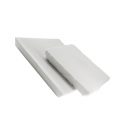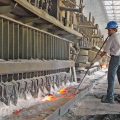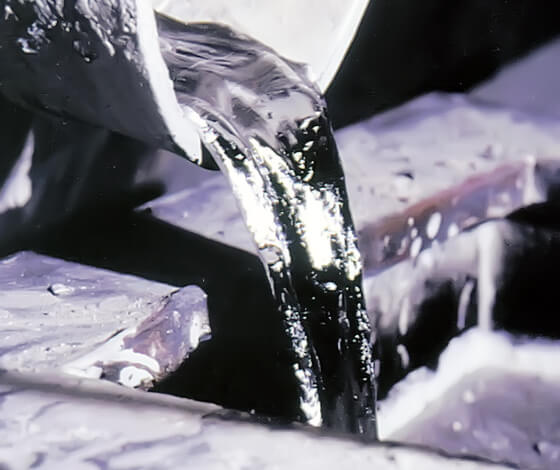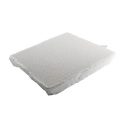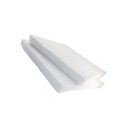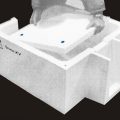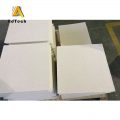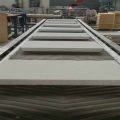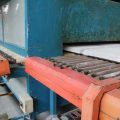40 ppi Cff manufacturer: Defect analysis and solutions for casting aluminum alloy ingots
In the production process of cast aluminum alloy ingots, if improper control occurs, various product defects often occur, especially aluminum-silicon alloys such as ADC12 and A356.
Segregation of chemical components in ingots The phenomenon of uneven distribution of chemical components in ingots is called segregation. In deformed aluminum alloys, segregation mainly includes intragranular segregation and reverse segregation.
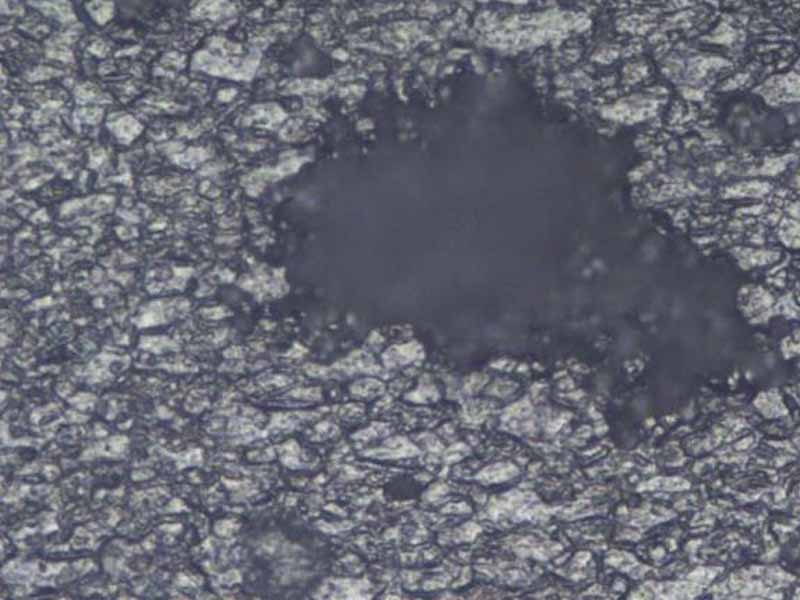
Intragranular segregation
The phenomenon of uneven chemical composition in grains in the microstructure is called intragranular segregation.
The microstructure characteristic of intragranular segregation is that the corroded intragranular structure resembles the tree ring-shaped structure. The microhardness in the grains is different, the microhardness near the grain boundaries is high, and the microhardness in the center of the grains is low.
The existence of intragranular segregation makes the chemical composition inside the grain and the structure of the ingot extremely uneven, which seriously deteriorates the performance of the ingot, mainly:
1. The chemical composition unevenness and unbalanced excess phase caused by the segregation in the solid solution crystals reduce the stability of the alloy against electrochemical corrosion.
2. The appearance of non-equilibrium eutectic or low-melting composition lowers the melting temperature of the alloy, which makes it easy to produce local over-burning during the subsequent thermal deformation or quenching heating process.
3. Intragranular segregation not only causes the appearance of non-equilibrium phases and increases the number of second phases, but also, these low-melt phases form a hard and brittle dendrite network around the crystal dendrites, which sharply reduces the plasticity and processing performance of the ingot.
4. The unevenness of chemical composition caused by intragranular segregation is inherited into the semi-finished product, resulting in the formation of coarse grains in the processed material after annealing.
Intracrystalline segregation is caused by unbalanced crystallization. Therefore, in the actual production of aluminum alloy continuous casting, intragranular segregation is inevitable. An effective method to eliminate intracrystalline segregation is to homogenize the ingot for a long time.
In continuous casting, the method to reduce intracrystalline segregation is:
1. Increase the cooling rate, use metamorphic treatment to refine the grains and intragranular structure, and narrow the scope of intragranular segregation.
2. Using the completely opposite method, reduce the cooling rate, and perform deep liquid cavity casting similar to ingot casting to reduce the degree of supersaturation of iron, manganese and other elements to reduce the degree of segregation.
3. Choose some additives that can properly change the crystal properties of the alloy. For example, adding an appropriate amount of iron to the 3A21 alloy reduces the concentration of manganese in the solid bath, thereby reducing the uneven distribution of manganese in the grains. In actual production, in the presence of impurity iron, the addition of titanium is beneficial to reduce the segregation in the solid solution grains of the 3A21 alloy, because the direction of titanium segregation and manganese segregation are opposite, and the center of the dendrite contains titanium, which reduces the The difference between the solid melt concentration at the center and the edge of the solid grain.
Reverse segregation defects analysis and solutions
The phenomenon that the solute concentration at the edge of the ingot is higher than the solute concentration at the center of the ingot is called reverse segregation.
The structural characteristics of reverse segregation are not easy to distinguish from the microstructure, and can only be confirmed from the chemical composition analysis.
The reverse segregation in aluminum alloy ingots is an important reason for the large differences in mechanical properties and physical properties of ingots and their pressure-processed products.
In areas where the degree of reverse segregation is severe, the chemical composition even exceeds the scope of the standard, and the mechanical properties exceed the standard and are scrapped.
Reverse segregation is a mixing phenomenon in the solidification process of aluminum alloy continuous ingots, which cannot be completely avoided, nor can it be eliminated by high temperature homogenization.
However, according to the formation rules and influencing factors of reverse segregation, the segregation of elements can be controlled within the allowable range. The solution is:
1. Improve the cooling strength of the ingot.
2. Choose an appropriate casting speed so that the inclination angle of the transition zone to the exposed liquid surface is not too large, generally not more than 60°.
3. Properly increase the casting temperature.
4. Use a suitable casting funnel to uniformly guide the flow and make it flow to the edge of the ingot.
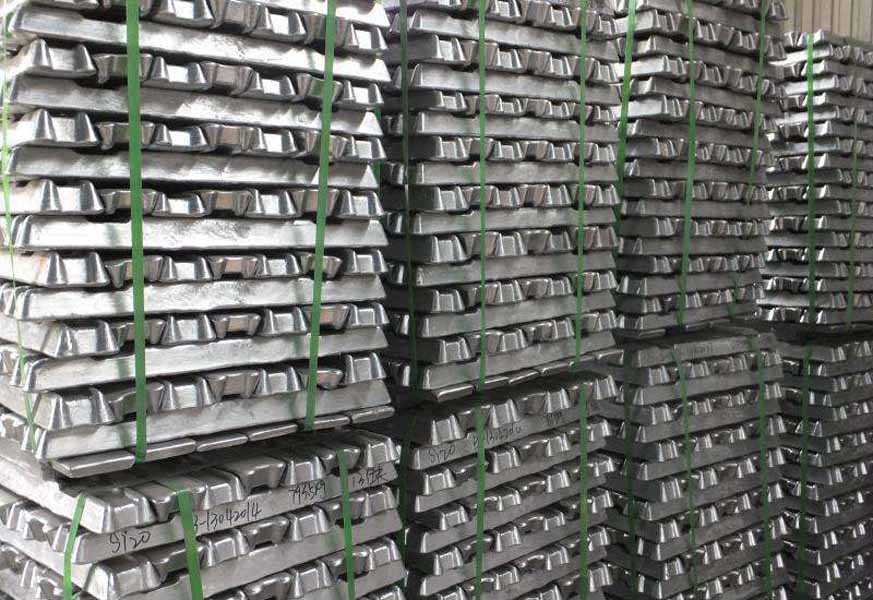
40 ppi Cff manufacturer: gas and non-metallic inclusions in the ingot
Non-metallic inclusions (slag inclusions)
The slag mixed into the ingot or other non-metallic impurities falling into the ingot is called non-metallic inclusions.
The fracture features are black strips or flakes, and the microstructure characteristics are mostly black linear, blocky, flocculent disordered tissues, which have obvious color difference from the substrate.
Non-metallic inclusions are an important cause of delamination and many surface defects in aluminum processed products.
During heat treatment and heating, the presence of non-metallic inclusions can promote secondary porosity and the formation of bubbles.
In terms of mechanical properties, non-metallic inclusions are places where stress is concentrated, reducing the strength limit and elongation of the alloy.
In particular, the reduction in transverse elongation and dynamic mechanical properties (impact toughness, fatigue strength, and fracture toughness) is more serious.
In addition, non-metallic inclusions will also reduce the alloy’s resistance to stress corrosion.
Non-metallic inclusions (slag inclusions) can usually be found when inspecting low-magnitude test pieces of the ingot.
YS67-1993 stipulates that for all alloy products, no more than two points of slag are included on the ingot test piece, and the single area is less than 0.5 mm2, otherwise it will be rejected.
Non-metallic inclusions (slag inclusions) are the most frequently occurring waste products in aluminum alloy ingots.
According to statistics, in terms of quality, the ingot scrapped due to slag inclusion accounts for 10% to 25% of the total waste. Slag inclusions are usually caused by slag, lining fragments and large-sized oxides that fall into the ingot with the liquid metal during the casting process.
The way to prevent slag inclusion is
1. Refining carefully to ensure the standing time, and filtering with glass cloth in the flow plate or funnel.
2. Shorten the transfer distance as much as possible, establish good transfer conditions, close all open drops in the flow channel, flow plate, and funnel to prevent fluctuations in the metal level. It is best to use the same level casting under possible conditions.
3. Thoroughly bake the transfer tool, properly raise the casting temperature, carefully slag during the casting process, and carefully clean the furnace, flow plate and other tools after casting.
4. Use clean charge.
40 ppi Cff manufacturer: Analysis and solution of oxide film defects
According to the definition of YS/T417.1-1999, the oxide film is the non-metallic inclusions and unexcluded gas (mainly hydrogen) that are mainly formed of aluminum oxide in the ingot.
Therefore, the oxide film is a kind of peculiar defect of non-metallic inclusions in the ingot, but it is different from the slag inclusion. It can not be found when inspecting the low-magnification test piece and fracture structure of the ingot, only It can be found only by using special craft samples (upsetting the ingot samples).
The oxide film found on the fracture of the ingot process sample can be roughly divided into three types
One type is a light yellow, brown or dark brown sheet oxide film.
The first type is “sparkle” with a white and bright surface similar to the sheet oxide film.
The other type is “small bright spots” with a silver-white luster that are round or oval.
When the melt crystallizes, the micropores formed in the dendrite after crystallization are loose due to insufficient supplement of liquid metal between the dendrites of the matrix or the presence of unexcluded gas (mainly hydrogen).
The pores formed by insufficient filling are called shrinkage looseness; the looseness formed by gas is called gas looseness.
The loose macroscopic structure is characterized by black pinholes, and the fracture structure is characterized by rough tissue and not dense. When the looseness is serious, there are small white bright spots on the fracture.
The microstructure is characterized by angular black holes, the more severe the looseness, the greater the number of black holes and the larger the size.
Looseness reduces the density of the ingot and the density, especially the impact toughness and lateral elongation of the high-strength aluminum alloy.
In addition, loose ingots will cause cracks during hot rolling and forging, and the semi-finished products will have bubbles during spheroidizing annealing.
Therefore, loosening, as an important organizational defect of ingots, must be prevented. Strictly control the looseness that has occurred in the ingot. When it exceeds the level allowed by the standard, the ingot will be rejected.
The degree of looseness in the aluminum alloy ingot can generally be determined by measuring the density of the sample and comparing it with the theoretical density of the alloy.
According to the formation process and influencing factors of looseness, the method to prevent the ingot from loosening is:
1. Reduce the gas content in the melt. Mainly should do the following:
1. The furnace is large and the oven should be thorough after mid-repair.
2. Preheating and baking of refining agent and casting tools should be thorough.
3. Refining should be thorough; (4) To prevent the melt staying in the furnace for too long.
Reduce the size of the transition zone in the ingot. The main measures are:
The looseness in the aluminum alloy continuous ingot is always distributed in the equiaxed crystal area with a wide transition zone, and is always filled with gas. Under normal conditions, the largest loose area of the flat ingot occurs within 30 mm of the wide surface skin layer. The largest loose area of the ingot occurs in the center of the ingot, and it develops toward the side as the crystallizer height increases. Water supply conditions have a great influence on the distribution of looseness, and may break the above rules and cause maximum looseness in local areas.

